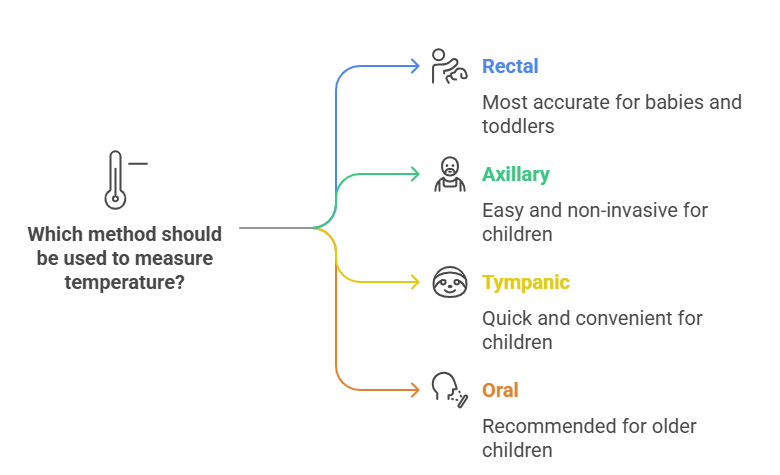Your cart is currently empty!
Fever is one of the most common signs that something might be wrong with your child’s health—but what exactly is a fever, and when should you be concerned?
Let us break it down in a simple, practical way.
🌡️ What Is a Fever?
Fever is an increase in body temperature beyond the normal range. But here is something many parents do not realize:
“Normal” body temperature is not the same for everyone.
It can vary depending on your child’s age, the time of day, and how you take the temperature.
✅ What Is a Normal Body Temperature?
Humans are generally born with a core temperature of about 36.5°C. As children grow, their body temperature may fluctuate slightly due to activity, sleep, and environment.
It is critical to understand the measurement method, as different methods have different “normal” ranges.

🔍 Ways to Measure Temperature in Children
Here are the most common ways to take a child’s temperature, with guidance on when to use each method:
- Rectal (in the bottom)
- Most accurate, especially for babies and toddlers.
- ✅ Recommended for birth to 5 years.
- Axillary (under the armpit)
- Easy and non-invasive.
- ✅ Suitable for children 3 months and older.
- Tympanic (in the ear)
- Quick and convenient.
- ✅ Also great for children 3 months and older.
- Oral (in the mouth)
- Recommended for older children who can hold the thermometer correctly.
- ✅ Recommended for ages 4 years and above.
📈 What Temperature Is Considered a Fever?
The threshold for a fever depends on the method used and the child’s age. Here is a quick guide:
➤ Armpit (Axillary) Temperature
- Fever is above 37°C
- For children aged 0 to 2 years, fever is above 37.5°C
➤ Ear (Tympanic) Temperature
- Fever is above 37.8°C
- For neonates (0 to 28 days) and infants (28 days to 24 months), fever is above 37.85°C
Knowing these numbers can help you decide when to offer comfort or seek medical advice.
🧠 Key Takeaways
Fever can feel scary—but it is often a sign that the body is doing its job to fight off an infection. You will be more confident and prepared to care for your child by understanding what a fever is and how to check it properly.
Stay calm, stay informed—and always reach out to your healthcare provider if unsure.
⚠️ Disclaimer: This article is for informational purposes only and is not a substitute for professional medical advice, diagnosis, or treatment. Always consult your child’s healthcare provider with any questions or concerns about their health.

